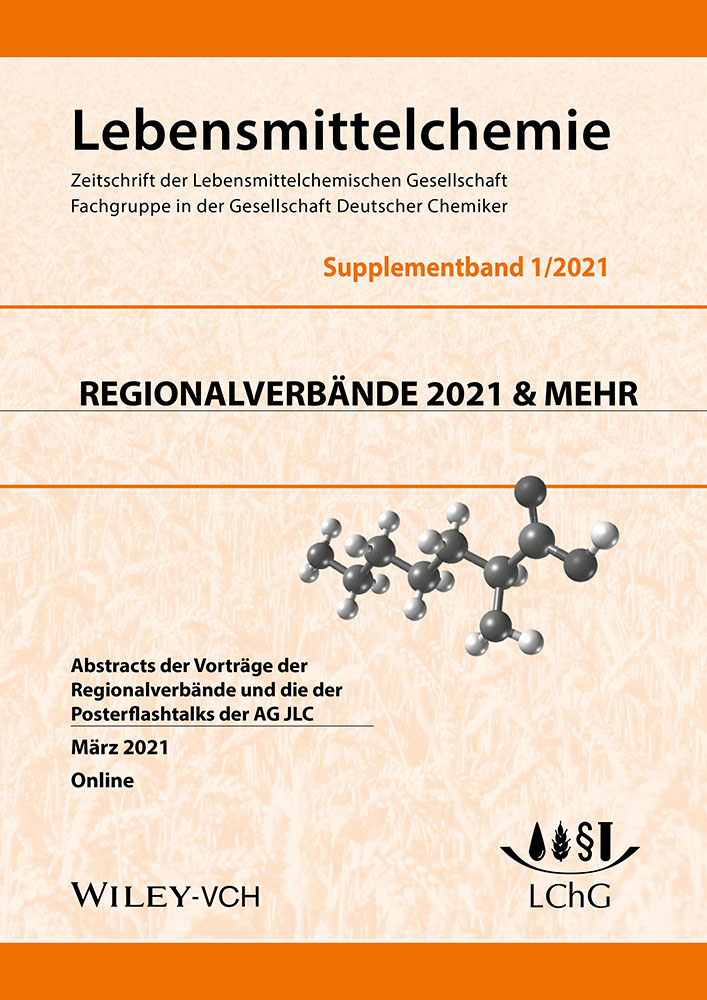Article
The bittersweet truth of sweet and bitter taste receptors
Veronika Somoza,
Veronika Somoza
Leibniz Institute for Food Systems Biology at the Technical University of Munich, Chair of Nutritional Systems Biology, Technical University of Munich, Lise-Meitner-Str. 32, 80234 Freising
Department of Physiological Chemistry, Faculty of Chemistry, University of Vienna, Althanstrasse 14, A-1090 Vienna
E-mail: [email protected]@tum.deSearch for more papers by this authorVeronika Somoza,
Veronika Somoza
Leibniz Institute for Food Systems Biology at the Technical University of Munich, Chair of Nutritional Systems Biology, Technical University of Munich, Lise-Meitner-Str. 32, 80234 Freising
Department of Physiological Chemistry, Faculty of Chemistry, University of Vienna, Althanstrasse 14, A-1090 Vienna
E-mail: [email protected]@tum.deSearch for more papers by this authorFirst published: 16 April 2021
No abstract is available for this article.
References
- 1Meyerhof W, Batram B, Kuhn C, Brockhoff A, Chudoba E, Bufe B, Appendino G, Behrens M (2010) The Molecular Receptive Ranges of Human TAS2R Bitter Taste Receptors. Chemical Senses, 35(2): 157–70.
- 2Brockhoff A, Behrens M, Niv MY, Meyerhof W (2010) Structural requirements of bitter taste receptor activation. Proc Natl Acad Sci USA. 107(24): 11110–5.
- 3Deshpande DA, Wang WCH, McIlmoyle EL, Robinett KS, Schillinger RM, An SS, Sham JSK, Liggett SB (2012) Bitter taste receptors on airway smooth muscle bronchodilate by localized calcium signaling and reverse obstruction. Nature Medicine 16: 1299–1304.
- 4Lee RJ, Xiong G, Kofonow JM, Chen B, Lysenko A, Jiang P, Abraham V, Doghramji L, Adappa ND, Palmer JN, Kennedy DW, Beauchamp GK, Doulias PT, Ischiropoulos H, Kreindler JL, Reed DR, Cohen NA (2012) T2R38 taste receptor polymorphisms underlie susceptibility to upper respiratory infection. J Clin Invest. 122(11): 4145–59.
- 5Liszt KI, Ley JP, Lieder B, Behrens M, Stöger V, Reiner A, Hochkogler CM, Köck E, Marchiori A, Hans J, Widder S, Krammer G, Sanger GJ, Somoza MM, Meyerhof W, Somoza V (2017) Caffeine induces gastric acid secretion via bitter taste signaling in gastric parietal cells. Proc Natl Acad Sci U S A. 114(30): E6260–E6269.
- 6Avau B, Rotondo A, Thijs T, Andrews CN, Janssen P, Tack J, Depoortere I (2015) Targeting extra-oral bitter taste receptors modulates gastrointestinal motility with effects on satiation. Sci. Rep. 5 10.1038/srep15985
- 7Liszt KI, Hans J, Ley JP, Köck E, Somoza V. (2017) Characterization of Bitter Compounds via Modulation of Proton Secretion in Human Gastric Parietal Cells in Culture. J Agric Food Chem. 66(10): 2295–2300.
- 8Nelson G, Hoon MA, Chandrashekar J, Zhang Y, Ryba NJ, Zuker CS. (2001) Mammalian sweet taste receptors. Cell 106(3): 381–90.
- 9Lee SJ, Depoortere I, Hatt H. (2019) Therapeutic potential of ectopic olfactory and taste receptors Nat Rev Drug Discov. 18(2): 116–138.
- 10Nakagawa Y, Nagasawa M, Yamada S, Hara A, Mogami H, Nikolaev VO, Lohse MJ, Shigemura N, Ninomiya Y, Kojima I. (2009) Sweet taste receptor expressed in pancreatic beta-cells activates the calcium and cyclic AMP signaling systems and stimulates insulin secretion. PLoS One 4(4):e5106.
- 11Kyriazis GA, Soundarapandian MM, Tyrberg B. (2012) Sweet taste receptor signaling in beta cells mediates fructose-induced potentiation of glucose-stimulated insulin secretion. Proc Natl Acad Sci U S A 21;109(8): E524–32.
- 12Ramos-Lopez O, Panduro A, Martinez-Lopez E, Roman S. (2016) Sweet Taste Receptor TAS1R2 Polymorphism (Val191Val) Is Associated with a Higher Carbohydrate Intake and Hypertriglyceridemia among the Population of West Mexico. Nutrients 8, 101.
- 13Schweiger K, Grüneis V, Treml J, Galassi C, Karl CM, Ley JP, Krammer GE, Lieder B, Somoza V. (2020) Sweet Taste Antagonist Lactisole Administered in Combination with Sucrose, But Not Glucose, Increases Energy Intake and Decreases Peripheral Serotonin in Male Subjects. Nutrients. 12(10): 3133.




